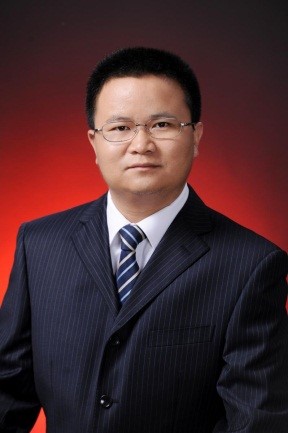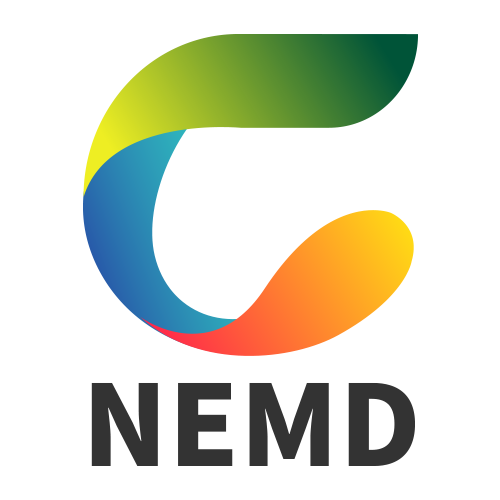
Prof. Sheng Han, Shanghai Institute of Technology, China (Foreign Academician of Russian Academy of Natural Science)
Experience: Han Sheng, Ph. D., Professor, Foreign Academician of Russian Academy of Natural Science, Doctoral tutor, Director of Science and Technology of Shanghai Institute of Technology. He has won more than 10 honors at the provincial and ministerial level and above, such as the National Project for Millions of Talents, “Hou Debang” Chemical Technology Innovation Award, Shanghai's leading talents, Shanghai Outstanding Technology Leader. Also, Prof. Han is the invited editor of many domestic and foreign journals, such as Fine Petrochemicals, Materials Herald, Chinese Chemical Letters.Prof. Han has presided over more than 70 horizontal and vertical projects, such as the National Natural Science Foundation Project, Shanghai Talent Development Fund, Shuguang Project. Published more than 290 research papers in Adv. Mater, Adv. Funct. Mate, Angew. Chem. Int. Ed, Small, Green Chem., Appl. energy, Fuel and other domestic and foreign journals as the first or corresponding author, 13 papers with high ESI citations. For another, Prof. Han has won more than 20 awards at the provincial and ministerial level and above, such as the first prize of China's invention and entrepreneurship achievements (2018), the second prize of Shanghai Science and Technology Progress Award (2015/2017/2020), the China Industry-University-Research Innovation Award (2020)).

Prof. Qi Hong, Harbin Institute of Technology, China (deputy dean of the Energy Institute of Harbin Institute of Technology)
Experience: Qi Hong, professor, doctoral advisor, deputy dean of the Energy Institute, deputy director of the key laboratory of the Ministry of Industry and Information Technology of the "Aerospace Thermophysics", young Longjiang scholar, core member of the "Touyan" program team, director of the "Young Scientists Studio" of Harbin Institute of Technology, and young top talent selection plan (professor). Main research directions: thermal radiation transfer and coupled heat transfer, high temperature diffuse particle radiation physical properties and temperature measurement, inverse problem of radiation transfer and intelligent optimization algorithm, microalgae new energy utilization, atmospheric radiation, aerodynamic optics, bio optical imaging, micro scale radiation, etc. As the person in charge, he has obtained the following fund support: National Natural Science General Fund, major instrument special sub project of National Natural Science Foundation of China, major basic sub project of the Science and Technology Commission of the Military Commission, major special sub project of two machines, key research and development plan of Heilongjiang Province, etc. Published more than 200 journal articles, including 169 SCI papers, 2 ESI highly cited papers, 1 cover paper, and 2889 SCI citations; 49 invention patents were applied and 46 were authorized; 24 software copyrights; Write 2 Chinese monographs and 4 chapters of specially invited English monographs. In 2015, it won the second prize of national defense technology invention, the first prize of Harbin Institute of Technology teaching achievement in 2015, and the second prize of provincial higher education teaching achievement in 2017.
Speech Title: Recent progress of acoustic tomography on noninvasive temperature and velocity measurement
Abstract: As a constituent of the industrial process tomography, acoustic tomography (AT) has emerged as a promising method for high-fidelity measurement of temperature and velocity fields, and is extensively employed in multiphase flow measurement techniques such as flow monitoring and combustion diagnostic. However, subjected to safety and reliability requirement of furnace, the number of installed transducers is restricted. This leads to a sparsity of valid data, which in turn results in the ill-posedness and rank-deficiency of limited-data AT. Therefore, special attention should be paid on acquisition of accurate time of flight (TOF) data and development of efficient reconstruction algorithm. In this work, we present a comprehensive review of the recent advancements made by our group in addressing the AT problem.
The intricate furnace environment, particularly the significant temperature gradient within, will affect the transmission of sound waves. According to Fermat’s principle of stationary time, path that wave travels is the one that takes the least time. Inhomogeneous temperature profile in region of interest will lead to velocity changes of sound wave, and thus the acoustic refraction effect. In large temperature gradient and low velocity magnitude situation, considering acoustic refraction effect, we utilized combined meshfree radial basis function and alternating direction method of multipliers to reconstruct temperature and velocity fields simultaneously.
However, there are some cases that the magnitude of flow speed is more than 100 m/s, and even approach to a couple of Mach. The flow speed cannot be ignored compared with the sonic speed. TOF with respect to temperature and velocity fields is nonlinear. Therefore, the covariance matrix adaptation evolution strategy algorithm is introduced to solve the nonlinear AT (NAT) inverse problem. In addition, the selection strategies of temperature and velocity regularization parameters are given.
To further guarantee the quasi real-time reconstruction and alleviate ill-posedness of NAT problem, this problem is transformed to be a many-objective optimization problem with four objectives. Knee point-driven evolutionary algorithm with improved environmental selection strategy is proposed to reconstruct the arbitrary inhomogeneous temperature and aerodynamic fields in furnace simultaneously.
Actually, transducers arrangement will also affect the reconstruction accuracy. Based on the prior information that linear independence of vectors incorporates maximum measurement information, linear independence degree metric is proposed to optimize transducer arrays arrangement. It contains no prior information about flow velocity fields, which make the procedure perform in an off-line mode.
In conclusion, the proposed methods for multiphase flow measurement provide valuable guidance for the development of non-intrusive, real-time pyrometry and velocimetry systems, capable of accurately measuring a wide range of velocity magnitudes and temperature gradients. The potential of these methods in complex combustion and flow diagnostic applications is expected to greatly benefit energy conservation, emission reduction, and optimization of combustion processes.

Prof. Rusen Yang, Xidian University, China (Vice dean of the School of Advanced Materials and Nanotechnology of Xidian University)
Experience: Yang Rusen, Distinguished Professor and Doctoral Supervisor of "Huashan Scholars". He is currently a professor and vice dean of the School of Advanced Materials and Nanotechnology of Xidian University. Professor Yang Rusen has long been engaged in the synthesis of new nano materials and their applications in new energy sources and sensors. For the first time in the world, it has prepared functional micro nano structures, including nano rings, ultra small single crystal nano springs, polarity controllable piezoelectric biomaterials, found a growth method to precisely control the orientation of nanowire arrays, participated in the pioneering research of nano energy, made breakthroughs in the direction of advanced sensors by using piezoelectric electronic effects, and has published more than 100 papers in international famous journals, such as Science, Nature Nanotech, Nano Lett, Adv. Mat., Nano Energy, etc, It has been cited for more than 10,000 times, and has been invited to make dozens of specially invited reports at international academic conferences.
Speech Title: Biomimetic peptide self-assembly for functional materials and novel applications
Abstract: The unique biological and physical properties of metabolites inspired fruitful studies of supramolecular assembly and their conjugates as engineering materials, and the discovery of piezoelectric peptide nanostructures enables the fundamental study of electromechanical characteristics and many practical applications. Randomly oriented polarizations of peptide nanostructures have severely limited their piezoelectric performance, while peptide assemblies with uniform polarization are essential for fundamental study and device fabrication. We have combined computational and experimental investigation and uncovered many piezoelectric biomaterials from amino acids and peptides. We discovered that applying an electric field to synthesize an ordered diphenylalanine (FF) array produced a uniformly polarized vertical array. Then we studied the effect of electric fields on the peptide self-assembled structures and achieved laterally aligned peptide arrays. Our computation showed that the piezoelectric peptide assemblies should outperform the conventional piezoelectric ceramics in an energy conversion device, and we then explored the peptide's energy harvesting potential. We fabricated peptide-based nanogenerators, hybrid nanogenerators, and flexible nanogenerators and explored their degradation behavior in different solutions. The self-assembled peptide structures are expected to expand the landscape of bio-inspired and environmentally friendly functional materials and enable new energy and sensing technology to improve health and quality of life.
